Integrin inhibition promotes atypical anoikis in glioma cells
- PMID: 24457956
- PMCID: PMC4040659
- DOI: 10.1038/cddis.2013.543
Integrin inhibition promotes atypical anoikis in glioma cells
Abstract
Integrins regulate cellular adhesion and transmit signals important for cell survival, proliferation and motility. They are expressed by glioma cells and may contribute to their malignant phenotype. Integrin inhibition may therefore represent a promising therapeutic strategy. GL-261 and SMA-560 glioma cells grown under standard conditions uniformly detached and formed large cell clusters after integrin gene silencing or pharmacological inhibition using EMD-121974, a synthetic Arg-Gly-Asp-motif peptide, or GLPG0187, a nonpeptidic integrin inhibitor. After 120 h, the clusters induced by integrin inhibition decayed and cells died. In contrast, when cells were cultured under stem cell (sphere) conditions, no disaggregation became apparent upon integrin inhibition, and cell death was not observed. As poly-HEMA-mediated detachment had similar effects on cell viability as integrin inhibition, we postulated that cell death may result from detachment alone, which was confirmed using various permissive and nonpermissive substrates. No surrogate markers of apoptosis were detected and electron microscopy confirmed that necrosis represents the dominant morphology of detachment-induced cell death. In addition, integrin inhibition resulted in the induction of autophagy that represents a survival signal. When integrins were inhibited in nonsphere glioma cells, the TGF-β pathway was strongly impaired, whereas no such effect was observed in glioma cells cultured under sphere conditions. Cell death induced by integrin inhibition was rescued by the addition of recombinant transforming growth factor-β (TGF-β) and accelerated by exposure to the TGF-β receptor inhibitor, SD-208. In summary, cell death following integrin inhibition is detachment mediated, represents an atypical form of anoikis involving necrosis as well as autophagy, and is modulated by TGF-β pathway activity.
Figures
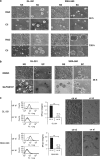
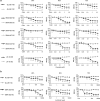

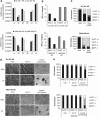
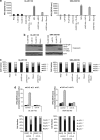
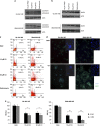
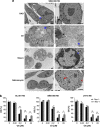
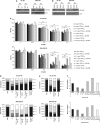
Similar articles
-
The aryl hydrocarbon receptor links integrin signaling to the TGF-β pathway.Oncogene. 2016 Jun 23;35(25):3260-71. doi: 10.1038/onc.2015.387. Epub 2015 Oct 26. Oncogene. 2016. PMID: 26500056
-
An RGD small-molecule integrin antagonist induces detachment-mediated anoikis in glioma cancer stem cells.Int J Oncol. 2018 Dec;53(6):2683-2694. doi: 10.3892/ijo.2018.4583. Epub 2018 Oct 3. Int J Oncol. 2018. PMID: 30280197
-
Integrin control of the transforming growth factor-β pathway in glioblastoma.Brain. 2013 Feb;136(Pt 2):564-76. doi: 10.1093/brain/aws351. Epub 2013 Jan 31. Brain. 2013. PMID: 23378223
-
The Interconnections between Autophagy and Integrin-Mediated Cell Adhesion.J Mol Biol. 2017 Feb 17;429(4):515-530. doi: 10.1016/j.jmb.2016.11.027. Epub 2016 Dec 6. J Mol Biol. 2017. PMID: 27932295 Free PMC article. Review.
-
Small molecule integrin antagonists in cancer therapy.Mini Rev Med Chem. 2009 Oct;9(12):1439-46. doi: 10.2174/138955709789957404. Mini Rev Med Chem. 2009. PMID: 19929817 Review.
Cited by
-
Mechanisms of invasion and motility of high-grade gliomas in the brain.Mol Biol Cell. 2018 Oct 15;29(21):2509-2515. doi: 10.1091/mbc.E18-02-0123. Mol Biol Cell. 2018. PMID: 30325290 Free PMC article. Review.
-
Integrin-α5 expression and its role in non-small cell lung cancer progression.Cancer Sci. 2025 Feb;116(2):406-419. doi: 10.1111/cas.16416. Epub 2024 Nov 24. Cancer Sci. 2025. PMID: 39581761 Free PMC article.
-
Real-time morphometric analysis of targeted therapy for neuroblastoma cells in monolayer and 3D hydrogels using digital holographic microscopy.iScience. 2024 Oct 23;27(11):111231. doi: 10.1016/j.isci.2024.111231. eCollection 2024 Nov 15. iScience. 2024. PMID: 39569369 Free PMC article.
-
Integrin Signaling in Glioma Pathogenesis: From Biology to Therapy.Int J Mol Sci. 2020 Jan 30;21(3):888. doi: 10.3390/ijms21030888. Int J Mol Sci. 2020. PMID: 32019108 Free PMC article. Review.
-
Distinct activity of the bone-targeted gallium compound KP46 against osteosarcoma cells - synergism with autophagy inhibition.J Exp Clin Cancer Res. 2017 Apr 12;36(1):52. doi: 10.1186/s13046-017-0527-z. J Exp Clin Cancer Res. 2017. PMID: 28403890 Free PMC article.
References
-
- Mitra SK, Schlaepfer DD. Integrin-regulated FAK-Src signaling in normal and cancer cells. Curr Opin Cell Biol. 2006;18:516–523. - PubMed
MeSH terms
Substances
LinkOut - more resources
Full Text Sources
Other Literature Sources
Research Materials

